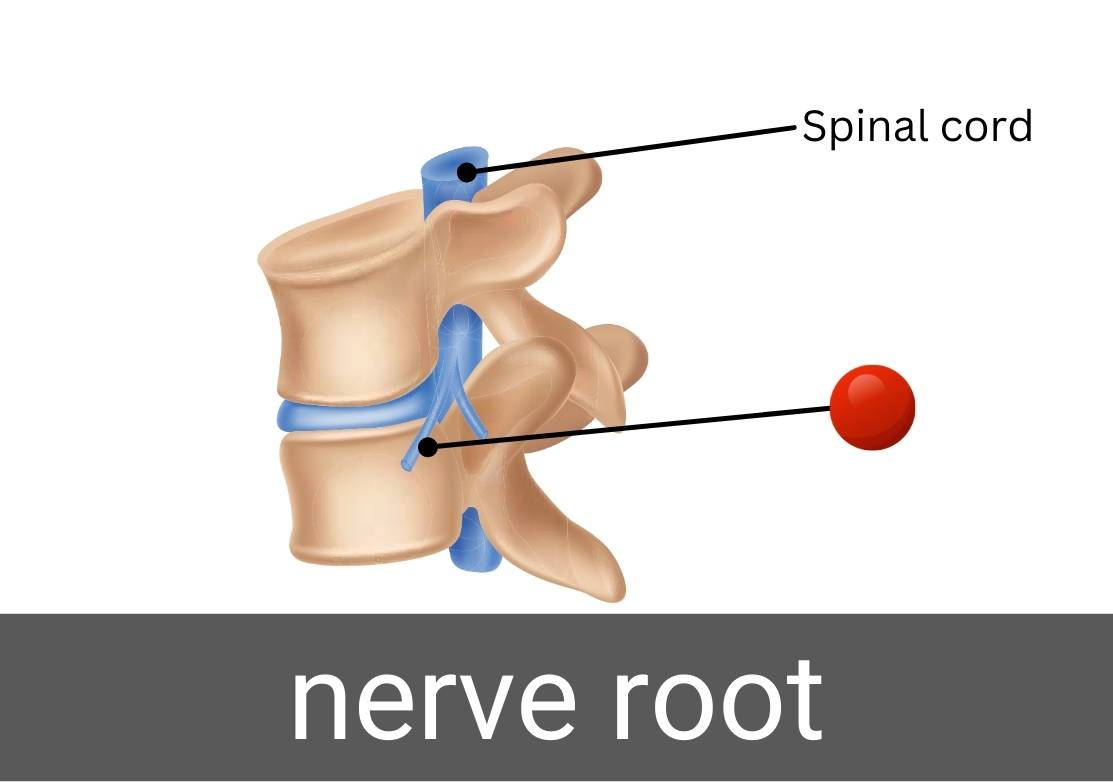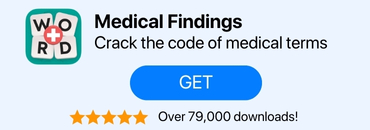Here is the second part of the quiz on the most common root words and combining forms used in nervous system terminology.
Quick Review for the Quiz
Check out the flashcard version for a more detailed review.
| Word Root | Combining Form | Body Part or Condition |
|---|---|---|
| mening, meningi | mening/o, meningi/o | meninges |
| myel | myel/o | spinal cord |
| narc | narc /o | stupor; numbness |
| neur, neur | neur/o, neur/i | nervous system or nerve |
| phas | phas/o | speech |
| poli | poli/o | gray matter |
| psych, ment | psych/o, ment/o | mind |
| radic, radicul, rhiz | radic/o, radicul/o, rhiz/o | nerve root |
| somn, somn | somn/o, somn/i | sleep |
| thalam | thalam/o | thalamus |
-
Question of
Find the combining form of the image highlighted.

-
mening/o
-
men/o
-
esthesi/o
-
rhiz/o
Correct Wrong
mening/o or meningi/o is a combining form that refers to "meninges". The meninges are three layers of membranes covering and protecting the brain and spinal cord (the central nervous system). The dura mater is the outer layer, closest to the skull. The arachnoid mater is the middle layer. The pia mater is the inner layer, located closest to brain tissue.
-
-
Question of
Find the combining form of the image highlighted.

-
myel/o
-
spin/o
-
medull/o
-
dur/o
Correct Wrong
myel/o is a combining form that refers to "spinal cord". The spinal cord is a thin, long tube-like structure made up of nervous tissue, connecting from the brainstem to the lumbar region (backbone). Spinal cord functions include sending motor commands from the brain to the body, sending sensory information from the body to the brain, and coordinating reflexes.
-
-
Question of
Find the combining form of the image highlighted.

-
narc /o
-
stup/o
-
numb/o
-
encephal/o
Correct Wrong
narc /o is a combining form that refers to "stupor; numbness". A state of stupor; numbness is an altered mental state in which a person is only stimulated by intense or distressing stimuli.
-
-
Question of
Find the combining form of the image highlighted.

-
neur/o
-
nervos/o
-
gli/o
-
myel/o
Correct Wrong
neur/o or neur/i is a combining form that refers to "nervous system" or "nerve". Nervous system components include the brain, spinal cord, and nerve fibers. This system is responsible for sending and receiving messages both between the brain and the body. All body functions are managed by the brain. Down the back, the spinal cord extends from the brain.
-
-
Question of
Find the combining form of the image highlighted.

-
phas/o
-
speech/o
-
gangli/o
-
thalam/o
Correct Wrong
phas/o is a combining form that refers to "speech". The capability to convey thoughts and emotions through vocal sounds and actions is called speech.
-
-
Question of
Find the combining form of the image pointed to.

-
poli/o
-
matter/o
-
radicul/o
-
dur/o
Correct Wrong
poli/o is a combining form that refers to "gray matter". Gray matter is a brain tissue which has a pinkish-gray color, is host to neural cell bodies, axon terminals, dendrites, and nerve synapses. A large amount of this brain tissue can be found in the cerebellum, cerebrum, and brain stem. Also, it is the part of the central spinal cord that is shaped like a butterfly. It is the gray matter that actually processes information while the white matter provides the communication between different gray matter areas.
-
-
Question of
Find the combining form of the image highlighted.

-
psych/o
-
mind/o
-
somn/i
-
poli/o
Correct Wrong
psych/o or ment/o is a combining form that refers to "mind". The mind is the part of a person that is responsible for the ability to think, to experience emotions, and to be aware of things around them.
-
-
Question of
Find the combining form of the image pointed to.

-
radic/o
-
root/o
-
nerv/o
-
myel/o
Correct Wrong
radic/o, radicul/o or rhiz/o is a combining form that refers to "nerve root". A nerve root is a branch that is located at the end of a spinal nerve, cranial nerve, or spinal nerve. Nerve roots come in two types: cranial and spinal. Movement and feeling are stimulated by spinal nerve roots. Cranial nerves send electrical signals from your brain to your face, neck, and torso. Senses such as taste, smell, hearing, and touch are also mediated by the cranial nerves.
-
-
Question of
Find the combining form of the image highlighted.

-
somn/o
-
sleep/o
-
narc /o
-
cephal/o
Correct Wrong
somn/o or somn/i is a combining form that refers to "sleep". Sleep is a naturally recurring cycle of mind and body. It involves altered consciousness, reduced sensory activity, decreased muscle activity, and the inhibition of almost all voluntary muscles during rapid eye movement sleep. As a result of sleep, the body and mind are reenergized, allowing a person to wake up refreshed and alert.
-
-
Question of
Find the combining form of the image highlighted.

-
thalam/o
-
thalm/o
-
ment/o
-
ganglion/o
Correct Wrong
thalam/o is a combining form that refers to "thalamus". The thalamus is a thick mass of gray matter situated in the back part of the diencephalon (part of the forebrain). The thalamus is the body's information relay center. Information from the senses (except smell) must be processed by the thalamus before it can be interpreted by the cerebral cortex. Additionally, the thalamus is involved in sleep, wakefulness, consciousness, memory and learning.
-




